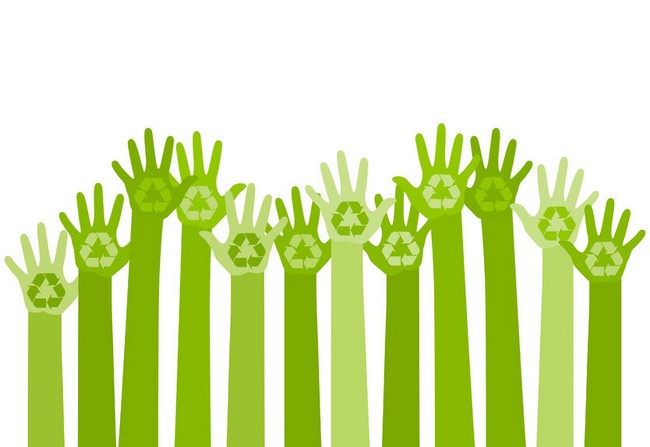11 Dec 2024

Tired Earth
By The Editorial Board

Circular economy, which is located in the “Innovation Trigger” stage of Gartner’s 2021 Hype Cycle for Supply Chain Strategy, strives to keep raw materials in use at the highest quality for as long as possible. This allows for the decoupling of resource consumption from enterprise growth, Watt explained.
When such a decoupling occurs, enterprises reuse, recycle, or refurbish end-of-life products to provide material for new production. In a successful circularity model, enterprises no longer require increased amounts of virgin materials in tandem with their growth.
“Our economy to date has been very much a take, make, and dispose type of economy,” Watt said. “And what the circular economy does is eliminate that dispose part by putting materials and products back.”
The need for transforming consumption is vast — humanity currently consumes 1.75 times more resources each year than the Earth can naturally regenerate — a number that is on course to more than double by 2050, according to the World Economic Forum.
Reducing consumption of materials can significantly lower overall greenhouse gas emissions. The Ellen MacArthur Foundation, a nonprofit focused on researching and developing a circular economy, reported a circular economy approach could reduce global carbon dioxide equivalent (CO2e) emissions from key industry materials like plastics, steel, aluminum, and cement by 40%, or 3.7 billion tons CO2e by 2050. According to the report, this can be achieved through waste elimination, product reuse, and materials recirculation.
But a circular economy isn’t just planet-friendly. It’s also a multi-trillion-dollar market opportunity. According to research from Accenture, this model could create $4.5 trillion in economic growth by 2030, and it has the potential to reach $25 trillion by 2050.
Plus, a circular approach alters the relationship between enterprises and suppliers. “Our suppliers might then become more of our partners when it comes to processing these products or materials at end-of-life,” Watt explained. “And it fundamentally changes the power dynamics in that relationship to be more collaborative.”
As those relationships shift, however, “there has to be equity,” Watt added. “There has to be something in it both for the organization and the supplier. We cannot just rely on goodwill to make the circular economy work. We have to both have a positive environmental impact, as well as there being a financial benefit for all parties involved in pulling a product around a circular loop.”
In spite of the positive environmental, financial, and supply chain impacts the circular economy model promises, a few crucial challenges stand in the way.
A major one is design, and it’s a challenge that might end up being the crux of the whole model, according to Watt. “We will be successful or we will fail when it comes to the circular economy due to product design,” she explained.
An organization’s business model can prove to be another big challenge, especially in early stages of developing circularity. For example, with a point-of-sale business model, products completely belong to the consumer after they buy them. This makes it difficult to get ahold of those products at the end of their lives — a crucial component of circularity.
Then the challenge becomes figuring out how to incentivize consumers to return products after they’re done with them to build a business case for implementing a circular economy model. “That’s something that we see clients battle with,” Watt said.
Organizations often combat this challenge through product return programs.
For example, Cisco’s Product Takeback and Reuse program lets customers return end-of-life products at no additional cost, and Cisco then reuses or recycles 99.8% of returned products.
Katie Schindall, Cisco’s director of circular economy, noted a lack of customer awareness poses a strong barrier to the effectiveness of these programs. But when customers learn about them, “they’re really excited about it,” Schindall said, reflecting growing consumer demand for circularity within the products they buy.
Dell Technologies also offers various product return programs that promote circularity. “We have all of these awesome avenues for people to actually recycle,” Dell Technologies’ Corporate Sustainability Director Erika Chan said. But raising awareness of those programs and driving shifts in mindsets around electronics recycling are issues the vendor continues to grapple with, Chan added.
Perhaps the most daunting challenge is moving circular initiatives past the starting line. “It’s a real change of mindset that needs to happen to take a circular economy model from a pilot project to full scale across the organization,” Watt said.
The circular economy model’s positive environmental impacts could be “massive,” Watt said, but there’s a long road ahead before those benefits are fully realized. Circle Economy’s 2021 Circularity Gap Report found only 8.6% of the world’s economy is considered circular. That percentage represents a decrease from two years prior when that figure was 9.1%.
Doubling economic circularity to 17.2% by 2032 could reduce global emissions by 39%, reduce total material footprint by 28%, and keep global temperature rise below 2 degrees Celsius, according to the report.
However, a recent ABI Research report suggests that doubling global economic circularity by 2032 isn’t likely. Instead the report estimates the world will reach just 10.5% circularity by 2030.
And considering the circular economy model is still in its infancy, it’s uncertain whether growth of that scale is plausible if business continues as usual. “The transition is going to take us some time because this is fundamentally a different way of thinking,” Watt said.
Source : sdxcentral.com
Comment